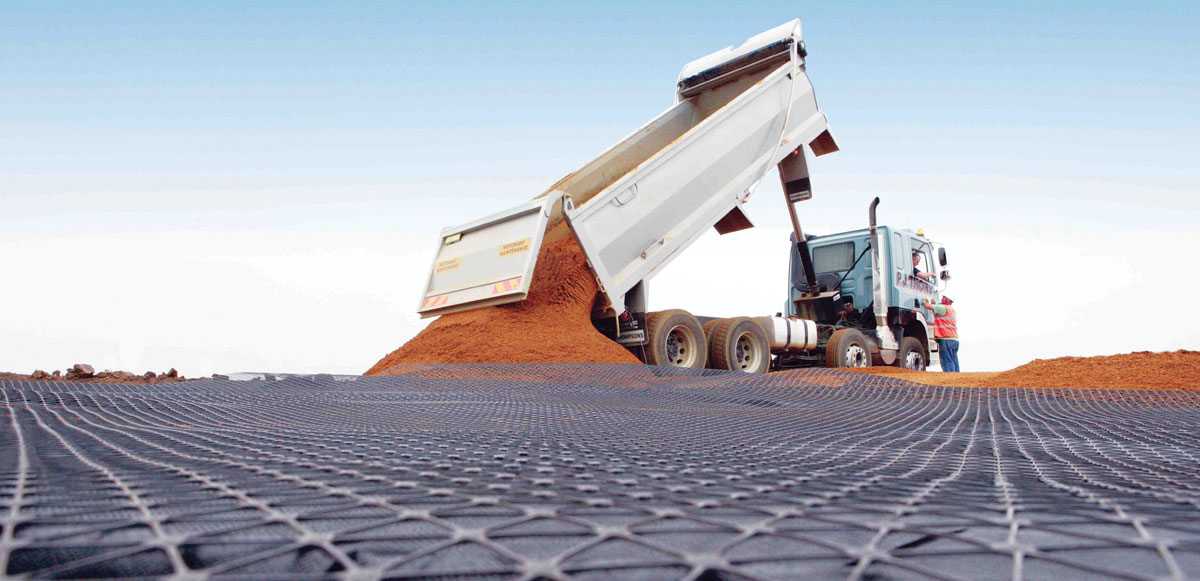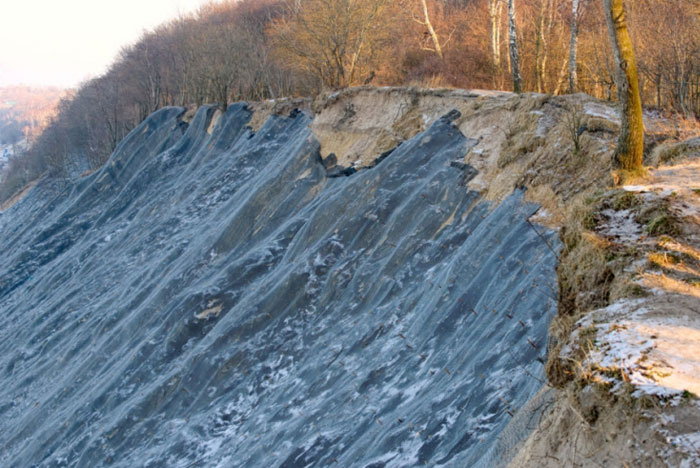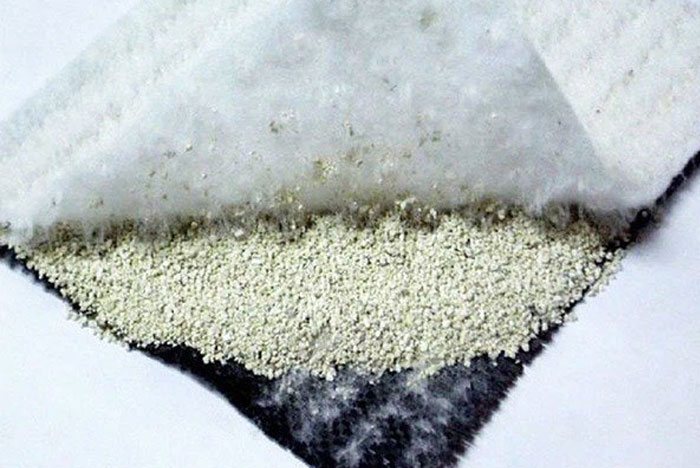
One effective method of ground improvement is the use of geosynthetics, which are synthetic materials that are designed to reinforce soil and improve its performance. In this article we see what is ground improvement.
What is ground improvement?
Ground improvement is the process of modifying the physical or mechanical properties of soil or rock to improve their strength, stability, and load-bearing capacity. This is typically done to support the construction of buildings, roads, bridges, and other infrastructure on weak or unstable soil or rock formations.
Ground improvement techniques can be broadly classified into two categories: soil replacement and soil modification. Soil replacement involves removing weak or unsuitable soil and replacing it with stronger material, such as sand or gravel. Soil modification, on the other hand, involves altering the properties of the existing soil through various methods, including compaction, consolidation, grouting, and stabilization.
Ground improvement techniques are used to address a wide range of soil and rock conditions, including soft soils, expansive clays, collapsible soils, and liquefiable soils. The choice of ground improvement process will depend on factors such as the type and condition of the soil or rock, the type of structure being built, and the required level of improvement.
Why do we need ground improvement?
Ground improvement is necessary for several reasons, including:
- Soil conditions: The natural soil conditions in an area may not be suitable for the construction of buildings, roads, and other infrastructure due to factors such as weak soil, unstable soil, or soil with poor drainage properties.
- Load-bearing capacity: Soil may not have sufficient load-bearing capacity to support the weight of structures and infrastructure, leading to settlement, deformation, or failure.
- Safety: The stability and safety of buildings and infrastructure can be compromised if they are built on weak or unstable soil or rock formations. Ground improvement can help to mitigate these risks.
- Environmental factors: Ground improvement can be necessary in areas where environmental factors such as earthquakes, floods, or landslides are common to ensure the stability and safety of structures.
- Economic factors: Ground improvement can be a cost-effective alternative to other methods such as excavation, soil replacement, or deep foundation construction.
What are the benefits of ground improvement?
The benefits of improving the ground include:
- Increased load-bearing capacity: Ground improvement can increase the load-bearing capacity of soil or rock, enabling it to support heavier structures and infrastructure.
- Improved stability: It can improve the stability of soil or rock, reducing the risk of settlement, deformation, or failure.
- Enhanced durability: Improving the ground can improve the durability of soil or rock, reducing the risk of erosion, corrosion, or other types of deterioration.
- Reduced construction costs: Ground improvement can be a cost-effective alternative to other methods such as excavation, soil replacement, or deep foundation construction.
- Faster construction: It can allow for faster construction by eliminating the need for time-consuming and costly excavation, soil replacement, or deep foundation construction.
- Reduced environmental impact: Ground improvement can reduce the environmental impact of construction projects by minimizing the amount of soil or rock that needs to be excavated or removed.
- Improved safety: It can improve the safety of structures and infrastructure by reducing the risk of settlement, deformation, or failure.
Techniques and methods used for ground improvement
There are various techniques and methods used for ground improvement, including:
- Compaction: This involves compacting soil to increase its density and load-bearing capacity. This is typically done using rollers, vibratory equipment, or other mechanical methods.
- Grouting: This involves injecting a cement or chemical mixture into soil or rock to improve its strength and stability. This can be done using various methods such as permeation grouting, compaction grouting, or jet grouting.
- Stabilization: This involves adding stabilizing agents such as lime, cement, or fly ash to soil to improve its strength and stability. This can be done using various methods such as deep soil mixing, soil-cement mixing, or lime stabilization.
- Vibro-replacement: This involves inserting a probe into the soil and filling it with aggregate material to improve the soil’s load-bearing capacity.
- Stone columns: This involves inserting columns of stone or gravel into the soil to improve its load-bearing capacity and stability.
- Dynamic compaction: This involves dropping heavy weights onto the soil to compact it and improve its load-bearing capacity.
- Geosynthetics: This involves using synthetic materials such as geotextiles or geogrids to reinforce soil and improve its strength and stability.
Read more: What is a geotextile?
The role of geosynthetics in ground improvement
Geosynthetics are synthetic materials that are used in various applications to improve the performance and durability of soil and rock structures. In ground improvement, geosynthetics are used to reinforce soil and improve its strength and stability.
Here are some ways geosynthetics are used in ground improvement:
- Reinforcement: They are used to reinforce soil and increase its load-bearing capacity. Depending on the application, geosynthetics can be used to stabilize slopes, embankments, retaining walls, and other structures.
- Separation: Geosynthetics are used to separate different soil layers and prevent them from mixing. This is important in preventing soil erosion and ensuring the stability of the structure.
- Filtration: They are used to filter water and prevent soil particles from being washed away. This is important in preventing soil erosion and ensuring the stability of the structure.
- Drainage: Geosynthetics are used to improve drainage and prevent water buildup in the soil. This is important in preventing soil saturation, which can lead to instability and failure.
- Liners: They are used as liners to prevent water from seeping into the soil or rock structure. This is important in preventing erosion and ensuring the stability of the structure.
Overall, geosynthetics offer several advantages in ground improvement, including their durability, flexibility, and resistance to chemicals and UV radiation. They can also be installed quickly and
The types of geosynthetics applied to ground improvement
There are several types of geosynthetics that are commonly used in ground improvement projects. Here are some of the most common types:
- Geotextiles: These are permeable fabrics made from synthetic materials such as polypropylene or polyester. Geotextiles are commonly used to reinforce soil and improve its stability, as well as to filter water and prevent soil erosion.
- Geogrids: These are materials made from polymers or metals that are used to reinforce soil and increase its load-bearing capacity. They can be made in different shapes and sizes, including flat, ribbed, and three-dimensional structures, depending on the specific application.
- Geocells: These are three-dimensional honeycomb structures made from polymer materials. Geocells are used to reinforce soil and provide a stable base for roads, parking lots, and other infrastructure.
- Geomembranes: These are synthetic liners made from materials such as polyethylene or PVC. They are used to prevent water from seeping into the soil or rock structure, and they can be used to line retaining walls, embankments, and other structures to improve their durability and resistance to water damage.
- Geosynthetic clay liners: These are composite materials made from bentonite clay and geotextiles. Geosynthetic clay liners are used to prevent water from seeping into the soil or rock structure, and they can be used to line landfill sites, water storage facilities, and other structures.
Conclusion
Geosynthetics are synthetic materials that are commonly used in ground improvement projects to reinforce soil and improve its stability, load-bearing capacity, and durability. They include materials such as geotextiles, geogrids, geocells, geomembrane sheets, and geosynthetic clay liners. The choice of geosynthetic material depends on several factors, including the type of soil or rock, the specific application, and the required level of reinforcement or protection.
They offer several advantages in ground improvement, including their durability, flexibility, and resistance to chemicals and UV radiation. Professional geotechnical engineers or contractors can provide guidance on the most appropriate type of geosynthetic material based on the specific conditions and requirements of the project.







